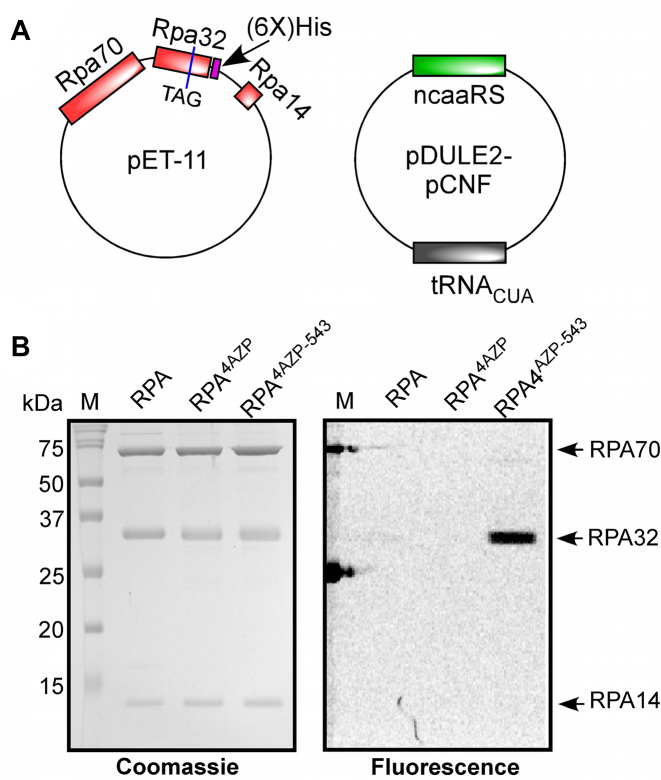Figure 2.
Insertion of ncaa and bio-orthogonal labeling of RPA. (A) Plasmids used for the overexpression of RPA and ncaa components. The three subunits of RPA are cloned into a pET vector and the RPA32 subunit is engineered to carry a C-terminal polyhistidine tag and a TAG inserted for the incorporation of 4AZP. The genes for the tRNA that recognizes the amber suppressor codon and inserts 4AZP (tRNACUA) and its corresponding tRNA synthetase are engineered into the pDULE2-pCNF plasmid. (B) SDS-PAGE analysis of RPAWT, RPA4ZAP and the MB543-labeled RPA (RPAf)proteins are shown after coommassie staining (left) or fluorescence imaging (right). Site-specific fluorescence labeling of the RPA32 subunit is observed.

